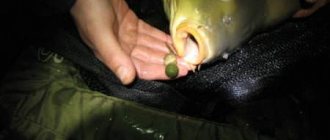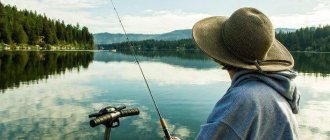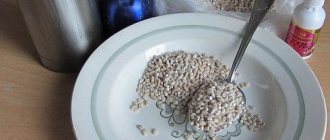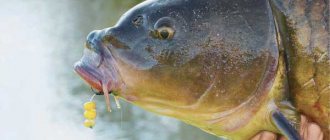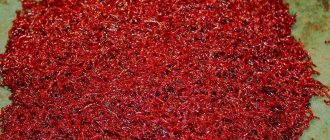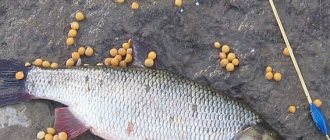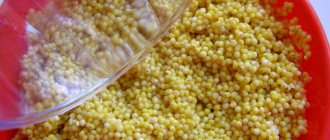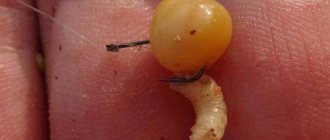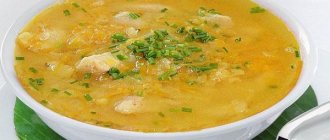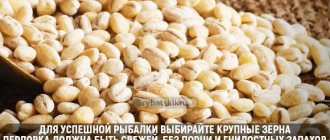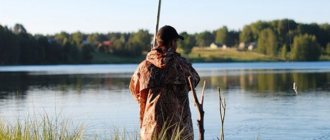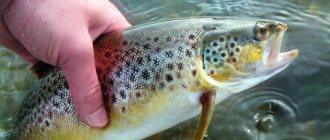Fishing is one of the favorite pastimes of most representatives of the stronger sex. Who else but them should know that there are a great many ways to prepare baits and baits for fishing. As for baits, they can be of either animal or plant origin. There are fishermen who claim that it is better to go with one type of fish, others begin to argue with them and convince them of the exact opposite.
There is no point in arguing, because in fact, the same fish can bite well at worms at one time, for example, but at another time it will not swim closer than a few meters to them. At the same time, fishermen agree that pea fishing is a good way to both purchase an inexpensive product and be able to catch as many fish as possible.
Valuable properties of fruits
Peaceful fish in most cases feed exclusively on plant foods or representatives of worms, insects and mollusks. Many species of the Cyprinidae family require a decent amount of fat, protein, carbohydrates and fiber. Peas for fishing are actively used by both amateurs and sport fishermen for the right reason.
Its fruits contain many different nutrients, but most of all they contain protein compounds. Soy protein (peas are a relative of soybeans and other legumes) allows you to quickly gain fat and muscle mass. Large representatives of the Karpov and Somov families need a large amount of it, especially during periods of sharp cold weather, which leads to the cooling of reservoirs.
Peas are easy to prepare and are a versatile remedy. It is possible for fishermen to use both baits and baits, which are easy to make with your own hands at home. Over the past period of using peas in fishing, more than two hundred recipes for various dishes have been developed.
Many dishes can be safely called universal, suitable for fishing almost all peaceful fish. Do not forget that some fishermen, especially athletes, record holders and advanced amateurs, go fishing with a given goal - to catch a representative of a particular species! If such a fisherman went, say, for an ide, but caught a crucian carp, then he would not be entirely satisfied. Below we will present recommendations on the use of peas for catching specific representatives of the fauna of reservoirs.
How and what kind of fish to catch with these beans
If you come to the reservoir for the first time, then you first need to find out a few details:
- who lives in it, what kind of fish;
- what are their preferences;
- at what time of year and day (also weather conditions) the intensity of the bite increases and decreases;
- features of the bottom surface (choice of gear);
- feeding areas of target aquatic life;
- ratio of the number of predators and herbivores;
- How local fish feel about peas and dishes made from them.
There are three ways to find out the relevant criteria. The first method is the most difficult - try it, select it yourself. The second method is available in relation to large bodies of water - read articles and look at reviews on the Internet. Almost no one writes about small wild waters or makes videos. The third method is much simpler - ask local old fishermen who have been coming here for many years.
Cupid White
This species is special not only in its way of life, but also in the fishing process itself. He does not bite on pea porridge, boiled and steamed beans (unless he is very hungry). Grass carp are caught on the fresh leaves of this plant or young pods! It is recommended to add filamentous algae and the same ingredients to the bait. The tackle required is a float, plug or match.
crucian carp
Unfortunately, there are no requirements regarding crucian carp. Why in a negative sense: although this fish is distinguished by its simple diet (it is practically omnivorous), but on a particular body of water under certain conditions the fisherman has to spend a long time selecting bait and attachment. Crucian peas can be consumed in different forms, except for raw fruits. He can cook porridge, steam or soak beans, and make crumpet. There are no requirements for fishing gear. This includes float rods, donks (“rubber bands”), feeders, and so on.
This fish is generally called by the people “underwater pig”. Carp can attack and eat whatever they like. He is also partial to peas. Carps love steamed peas, canned, soaked, boiled, and sometimes raw beans. A prerequisite is the presence of sugar. These fish love sweets. Try to add cake to complementary foods. Large carp try to stay on the bottom during the daytime. Early in the morning or evening they can be found in the reeds near the shore.
Tenches are one of the most valuable fish species. They are distinguished by caution, laziness and a keen choice of food - a capricious fish. The fisherman should pay close attention to casting gear and feeding. The tench is afraid of noise and, when frightened, lies down on the surface of the bottom. Lures and bait made from peas attract him very well. Tench have a lot of fat in their body, and such fish need high-calorie food. This inhabitant consumes fruits in almost any form, except for fresh beans and pods. Nozzles - soaked, boiled, steamed or canned peas (less often). Food - porridge, mastyrki, cakes made from pea flour and dry mixtures with crushed beans. Tench usually stands in grassy areas of the reservoir: thick algae, thickets of cattails, reeds or swimsuits.
For ide, experienced fishermen soak and then boil the peas so that they are strong. Small and fallen beans are added to the bait, and the rest go to the hooks. Cake is used as the best flavoring agent, but you can stop there. We catch ides using peas in rivers from a boat, using a float rod as the tackle. This fish willingly stands in snaggy places and where there are flooded bushes.
Carp
Large carp, like bream, spend most of their time at the bottom. Their favorite treat is pea boilies with sugar. This dish has a rich taste, but keep in mind that you will have to use large baits if you are going for large inhabitants. When the bait is small, it can be attacked by small fish. She avoids everything that is larger than the size of her mouth. We catch carp in late spring, summer or early autumn. At other times of the year, these fish completely lose activity.
Techniques and tactics for catching bream using peas
On small rivers and lakes, catching bream with peas is carried out using a float, but it is worth taking into account the depth and speed of the current. In this case, it is necessary to feed the fish with balls, directly to the point of casting the fishing rod. To achieve the desired result, the current should be small so that the hook with the attached peas remains at the feeding point on the bottom, since the fish will not be able to find a lonely bait that will “go away” with the flow from the scattered pea porridge.
Did you know? Peas have a large amount of protein in their composition, and in nutritional value they are not inferior to beef.
The consistency of the feeding should be selected taking into account the fishing location and the speed of the current. If you are going to fish on a lake where there is no current, the porridge is prepared as for a feeder. With strong movement of water masses, the consistency of the porridge should be viscous, so that at the bait point it falls apart gradually, with the further formation of a feed plume in the direction of the flow, attracting large fish.
It is necessary to throw the tackle to the baited point in such a way that the bait hits the bottom and the sinker lightly touches it. The best moment for hooking is when the float is laid by the fish lifting the bait.
Thus, preparing bait and groundbait for bream from peas is very simple, but it is worth remembering that the fish will bite well only if the preparation rules are followed, and taking into account the main factors - the fishing location and the current. To achieve a good catch, it is also important to choose the right tackle and equipment for using peas as bait.
How to use peas in fishing?
Almost all plant-based foods are used in fishing, but not all foods are equally effective. One of the favorite and attractive baits for fish is peas, but it is important to prepare them correctly first. There are several ways and rules on how to properly cook peas for fishing so that they are fragrant, do not fall off the hook and attract various omnivorous fish. Preparing peas for fishing is a common task faced by an angler at the stage of preparing ground food and bait, but there are several secrets that can increase the catchability of the bait.
How to use peas for fishing
Fishing with peas is effective in both slow and fast-moving water. Fishermen have been using peas as bait for centuries and almost always return home with a catch. This ancient food is especially actively used in Russia.
Pea bait is popular because of the strong, attractive aroma that spreads throughout the reservoir and lures fish to the bait site. Peas are not only a simple, but also a popular bait, but its effectiveness largely depends on whether it is prepared and used correctly or not. There are so many anglers, so many opinions regarding the preparation of bait, but when choosing effective fishing methods, it is better to focus on proven methods.
When choosing raw materials, we recommend buying whole peas for fishing; they retain strength and are well fixed on the hook. Unshelled peas for fishing take twice as long to cook as peeled grains and are not overcooked.
Pea bait is popular due to its strong, attractive aroma.
Using peas for fishing
From the many years of experience of his predecessors, the modern fisherman already knows that bait like peas is practical in both standing and flowing waters. The persistent aroma actively attracts the inhabitants of rivers and lakes to feast on such a find.
Feeding the area where the fish hunt will take place plays an important role. The prey must be familiar with the smell of the bait, otherwise there is a risk of unsatisfactory bites.
At first glance, everything is quite simple, but you need to be able to choose and prepare this valuable plant product correctly.
For this recipe you will need:
What kind of fish can you catch with peas?
Almost all cyprinids will appreciate the product, but more often than other species you come across:
- carp. Catching carp with peas is more successful after mid-summer, during intense heat. A good bite lasts right up to severe cold weather, when it is preferable to put animal food on the carp. Pea grains are a universal bait that forms the basis of bait for float fishing, and also performs well when using bottom gear. Carp also go well for canned beans; due to the ease of purchasing them, many fishermen use this method, but the tactic leads to frequent bites of small things;
- ide. When hunting ide, you should use peas starting in May; the season lasts until September, sometimes until the first days of October (depending on the temperature). If in the fall peas lead to an unstable bite, in the summer - on the contrary, the bites are confident and frequent. To catch ide, we recommend throwing bait and tackle near shelters: stones, snags, overhanging trees, bushes, roots of surface vegetation. Trophy specimens often live in such shelters. An interesting feature of ide is that it is better caught on a day with strong wind and rain;
- bream. Fish inexperienced in “pea” matters bite well on ordinary peas, preferring large grains. If you prepare bait for bream, it is better to steam it; boiled grains perform worse. It is advisable to use peas together with flavorings: sweet aromas (honey, vanillin) and spicy aromas (anise, cake);
- carp. Although he bites on the usual variety of cereals, he prefers Turkish varieties, which have large and plastic grains. When cooking peas, flavorings similar to bream varieties are often added. The mixture with peas has proven effective in spring and the first half of summer. The largest individuals live on the bottom with an abundance of snags and an overgrown bottom, and this is where trophy seekers go.
There are also smaller fish that like pea porridge, the most common by-catch being crucian carp.
During extreme heat, carp bite well on peas
Cooking porridge for bait
Pea bait for bream is even easier to prepare; here you don’t have to bother with the size of the flame under the pan. For food, it is desirable that the cereal is just boiled and acquires a paste-like consistency.
The preparation process is not complicated; even a fisherman without experience can cope with it. Peas for bait are cooked as follows:
- in the store they buy white or orange shelled peas;
- Before use, the cereal is sorted or washed;
- then place it in a saucepan or other container for cooking and fill it with water;
- put on fire and bring to a boil;
- then the flame is reduced, and a clove of garlic, a cinnamon stick, star anise, cloves or coriander grains are added to the peas if desired;
- cook until cooked, that is, the grains should boil and turn into puree.
Remove the pan from the heat, remove the spices if they were added, and mash the contents with a potato masher. This will be the basis with which you can work further.
To prepare peas for bait, it is also better to soak the grains.
Tips for baiting bream
Spring baits
Depending on weather conditions in the spring, bream can actively react to different baits: March: bloodworm, worm, semolina, dough. April worm, maggot, bloodworm. May peas, corn, dough, pasta, semolina, bread, boiled wheat, pearl barley. The higher the air and water temperatures, the faster the bream switches from animal baits to plant baits.
Summer baits
In the summer heat, many complain about a complete lack of bite, but this is not always true. Properly selected bait can attract the attention of bream even in the heat. June: worm, maggot, corn, peas, pasta. July: steamed barley, maggot worms in the form of sandwiches. August: bread, pasta, corn, maggot worm. Temporary decreases in temperature indicators will entail a return of bream to animal types of bait ; vegetable bait should be offered in hot weather.
Autumn lures
In the autumn, bream continue to be actively caught on the feeder; groundbait and bait, as before, should work in tandem in such gear. As the temperature drops, bream will again want “meat” baits. September: earthworm and dung worm, maggot, hominy, bread, steamed cereals. October: bloodworms, worms, less often maggots. November: maggots and bloodworms, plant-based baits will not work. It is important to understand that the bait used in crushed form must be added to the bait .
Winter lures
In winter, bait for bream is very important; it is more difficult for passive fish to attract attention. Therefore, the selection of bait should be approached very carefully. December : sandwiches made from pieces of worms, bloodworms and maggots, less often boiled peas are used. January : bloodworm, worm. February : worm, bloodworm, semolina, peas. You can experiment and try using the dough as bait; at the end of February, bream can respond well to this species.
Pea porridge with millet
Pea porridge for bream, a recipe with millet, is also very popular among fishermen. This bait option will work perfectly both in still water and in water areas with a slight current.
The preparation is not complicated; half an hour after the peas boil, a small amount of washed millet is added to the container, and the amount of liquid is adjusted independently. Boil the peas with the additive for at least 15 minutes, then wrap them up and leave for another 10-20 minutes, depending on the consistency and amount of liquid in the container.
Advantages and disadvantages of using peas in fishing
In the era of modern gear and lures, all classic equipment is being revised and gaining skeptical fishermen. To dispel prejudices regarding the advisability of using peas, let's consider the main advantages of the bait.
Advantages:
- can be used in all seasons, with the exception of cold periods of the year, when the bite on plant baits worsens. During periods of changing animal baits, the most popular bait for carp is peas;
- ease of cooking. Making mastyrka from peas is very simple. Despite the abundance of cooking methods, the fisherman will eventually find the optimal and favorite method for himself, and will use it. If you couldn’t cook the pea grains correctly, there is no need to despair, because legumes go well with various porridges;
- low price. The abundance of assortment in the store is not accessible to every fisherman; purchasing all the baits will lead to significant costs. The markup on finished peas will be from 300%, and the mixture is sold in small containers. By purchasing 1 kg of dry peas, we can use the raw material for a week with frequent fishing trips;
- Standard fishing gear is used for fishing; there is no need to modernize it. The fisherman is not required to use expensive and specific gear. Conventional float and bottom tackle is the best choice;
- good prospects for a big catch. Large specimens can really be interested in peas, but small fish, due to their large size, react poorly to bait. Usually carp and carp weighing from 800 g are on the hook.
Which peas are best to use for fishing?
The preferred type of vegetable depends on the carp breed. Both the place of fishing and the season are of no small importance.
Some important tips on which peas are best for fishing:
- there should be no bugs in the grains. Pests deposit waste products into the raw materials, which greatly worsens the smell of the bait. The purity of the grains and the absence of pests is an important condition for the right choice. You can avoid problems by purchasing planting seeds; they are packaged in sealed containers and pre-treated with high temperature, which kills the larvae of microscopic pests;
- unshelled legumes. Marrow (unhulled) grains are the best in their niche; carp seeds love wrinkled seeds. A similar note is also useful for fishermen, because wrinkled grains are resistant to cracks during fishing. Peeled and canned peas for fishing are used only for special purposes;
- We take whole grains. It will not be possible to properly cook peas for fishing if half the seeds are used, and the fish are indifferent to such baits. There is no need to talk about the reliability of fixation on the hook.
Content
- 1 Peas for fishing 1.1 Choosing peas for fishing
- 2.1 Methods for preparing peas 2.1.1 Peas for fishing in a slow cooker
- 3.1 Feeding with peas
Peas for fishing - methods of preparation, catching, baiting and feeding fish (video + 125 photos)
The use of peas as bait for fishing has been known since the advent of this industry. The advantage of this product is that it can be used both in standing water and in fairly strong currents. Peas have a fairly rich aroma, which attracts even large species of fish.
Brief contents of the review:
Rules for choosing dry peas
Dry quality peas should be medium in size and 3 to 4 mm in diameter. Quality peas are either green or bright yellow in color. But larger and heavier peas are already a fodder variety. When choosing split peas, you should give preference to products that are packaged in the most durable and airtight packaging, which will protect them directly from moisture and so on.
Whole peas or halves should not have any damage from pests. But the presence of garbage, or a sufficiently large number of crushed pieces, can indicate that the quality of the cereal is low.
Few people know that dry peas do not lose any unique properties for several months when they are stored in a completely sealed container (for example, in an ordinary glass jar). At the same time, you can put a small fabric bag at the bottom of the container itself, and sprinkle salt on it - this will eliminate the problem with the grains becoming damp.
- Peas should be whole with thin skin. Of course, as mentioned above, peas must be whole and with thin skin. This shows that the grains are actually high quality and not spoiled. Fish will not bite on bad bait (especially if it is hard or rotten). At the same time, pea grains must be whole. First of all, whole peas are easier to put on the hook. Secondly, they emit more aroma, especially under water. Thirdly, the fish are easier to catch when they completely capture the grain.
- There is no need to be afraid that the grains are wrinkled. After absorbing moisture, they will increase in size and straighten out. If the grains are wrinkled, then do not worry about it. Of course, many people are alarmed by this appearance. But these are only concerns, because immediately after the peas absorb some of the moisture, they will immediately swell - they will take on the correct shape, the wrinkles will disappear and they will become even larger than before. Of course, the wrinkles will disappear. Their presence indicates that they were very well dried, but not that they are bad or of poor quality. They do not lose their quality in this state.
- It is best to purchase a large batch of one variety of peas for fishing for the entire season. In fact, it is best to purchase peas for the entire season at once. Professional and experienced fishermen do just that. This is due to the fact that it takes time to prepare, to find normal products, and so on. It’s better to buy it right away so you don’t have to look for where to find suitable peas later.
- There is no need to worry about the presence of black “pill” grains in dry peas. Such pills are no big deal, since you can also successfully catch fish with them. It is important to pay attention to the fact that many fishermen very often manage to catch very large and sometimes even trophy specimens with them. Their color does not mean that they are bad or of poor quality. They contain exactly the same amount of useful substances as the most ordinary peas. Yes, indeed, they are a little smaller, but they are exactly the same in their characteristics.
- When purposefully catching large species of fish, preference should be given to high-quality peas. Of course, if you are going to catch large and large fish, then you should give your own preference to varietal types of peas. This is due to the fact that such peas are bulkier and have a richer aroma or taste. In any case, it is worth remembering that high-quality peas are a little more expensive than regular peas.
Choosing the right peas
Before moving on to the question of how to properly cook peas for fishing, you need to figure out what material will be most suitable.
Peas are often selected based on size; the larger they are, the larger the fish will be caught.
In addition, when choosing peas for fishing, pay attention to the following points:
The product must be as fresh as possible; the presence of various bugs inside the peas is not allowed. This point is also responsible for the quality of the product.
The grains must have husks. Previously shelled peas are not suitable. Wrinkled seeds are considered the ideal solution, since in their case the husk will definitely not burst.
The grains stand out for their integrity. You don’t even have to try putting halves of grains on the hook, as they won’t hold on for long.
How to put peas on a hook
It is very important to place the peas on the hook as required by certain rules, otherwise the grains will simply disintegrate on the hook.
To do this, you need to string the “eye” of a legume onto the tip of the hook. You can identify it by its lighter color. Next, the sting is carefully passed between the two halves, but so that they do not fall apart. Some fishermen plant several grains at a time. If you plan to catch some unpretentious species of fish, then the end of the hook may peek out from the pea. Otherwise, it will need to be hidden.
Some products are strung on hair cords. In this case, the peas in the central part are pierced with a needle, and then strung like garlands. This bait especially attracts carp.
Perhaps the fisherman will make some mistakes the first time, but this is quite normal for beginners, but after that he will get the hang of it and will do everything automatically.
Features of soaking
The next pressing question is how to soak peas for fishing? It's simple, you need to take a lot of liquid. The ratio of grains and water should be 1:5.
If you mix it with soda in water (1 small spoon per 1000 ml of water), the process of softening the grains will significantly speed up. The amount of soda can be reduced, it all directly depends on the initial hardness of the peas. You should avoid using salt.
Next, immediately before the process of cooking peas, the water and soda must be drained, replacing it with plain clean water; if this is not done, the grains will simply boil.
Steaming in a thermos
If the pea decoction takes a lot of time, you can use another method of preparing it - steaming it in a thermos.
Namely:
- pour a glass of beans into a large thermos;
- add 1 tsp. soda;
- pour boiling water in the amount of one liter;
- leave for 10 hours.
This method guarantees the integrity of the peas. It is advisable to keep the bait in gauze or other fabric packaging.
Combination of pea and wheat flour
If you are interested in how to prepare peas for fishing in combination with wheat flour, then you need to stock up on an hour of free time and follow this plan:
Prepare wheat and pea flour, and then mix them in a 1:1 ratio.
Any flavorings that can attract fish are added to the mixture.
A small amount of water is added, the final consistency should be such that you can press the mixture manually using a slingshot.
Check the consistency using a spoon by scooping a little mixture into it. If the porridge flows, it is too liquid, and if it crumbles, then you need to add a little water.
The resulting mixture is placed in a bag, tied with a thread, after which it is placed in a pan, where it is boiled for 30 minutes.
How to cook properly
Our task is to preserve whole grains after the initial processing of peas, this also applies to the shell. We can check ourselves by pressing a little on the grain, it should remain intact. It’s even better if the beans remain plastic and only slightly change shape when pressed.
Basic recommendations on how to properly prepare peas for fishing:
- We soak the peas in water in a ratio of 1 to 4-5;
- To speed up cooking, pre-soak the peas in water. There is a little secret - to speed up the soaking of the grains, add baking soda to the water. The proportion of soda in water is approximately 1 tsp. to 1 liter of water, but young beans require less, and old ones require more. Before cooking, drain the water and replace it with new one; the peas will boil quickly in the water and soda;
- We do not use salt during cooking;
- The aroma of the legumes themselves is not strong enough, so before properly cooking peas for fishing, add milk and sunflower oil. During the cooking process, the raw material will receive a strong and pleasant aroma, enhancing the effectiveness of the bait;
- During boiling, foam forms, remove it;
- to prevent the destruction of grains and damage to the peel, we avoid stirring the mixture during the cooking process;
- if you have a pressure cooker, the speed of cooking peas increases to one hour;
- To protect the skin from separating during cooking, we recommend placing the vegetable in a bag made of cloth or gauze.
It is impossible to say for sure how long to cook peas for fishing; all varieties have their own cooking time.
The beans should remain pliable after cooking.
Simple Method for Cooking Peas
If a person is cooking peas for fishing for the first time, then he should use the simplest recipe:
The grains are placed in a colander and thoroughly washed with running water.
The washed grains are placed in a cooking container and filled with enough water to completely cover the grains. In this form, the material is left for a day for high-quality swelling.
Green pea attachment
In the summer, peaceful fish feed mainly on plant foods. This is easy to understand when you gut caught crucian carp, roach, rudd and bream. Greenish remains of algae and other underwater vegetation can be found in the stomach of fish.
Fishermen, knowing about the food preferences of fish, actively use vegetable baits: bread, barley, wheat, semolina, peas, corn. However, it is rare that someone hooks green peas. Although it is sold in the same way as corn, in cans.
Preference in 90% of cases is given to canned corn. Perhaps due to the fact that it is brightly colored. Or maybe the reason is the great popularity of canned corn as carp bait. Meanwhile, green peas are very well suited for fishing, especially for grass carp and silver carp. Bream, carp, crucian carp, rudd, silver bream and roach are caught quite well with this bait.
How to use green peas?
When fishing on medium and large rivers and lakes, it is very effective to add green peas to the bait instead of corn, pearl barley and maggot. It is very useful to pour juice from a jar. It will give the mixture a persistent, pleasant aroma that the fish will definitely like.
The softness of the peas, on the one hand, gives the angler an advantage, but on the other hand, it forces him to make more careful casts. If you fish with float gear, then there is no need to worry about the integrity of the bait on the hook. But when fishing with donks and feeders, it is better to select the hardest peas. If they are all soft, then it is better to put two medium or small peas on the hook. This will guarantee that at least one will remain on the hook after casting.
When fishing for roach in the summer, it is better to put the nozzle on hook No. 12. And when fishing for bream and crucian carp, it is better to use a No. 10 hook with a not very long shank for such purposes. We thread the sting a little past the pea so that it peeks out a little.
The most difficult thing is to catch roach using peas. Its mouth is not so large and it is not always possible to detect this fish well. If we are targeting roaches specifically, then it is best to choose the smallest peas of the correct shape. You will also have to choose the shape of the hook. Practice shows that the same hooks are not always well suited for different fishing trips. It happens that on one they hook fish perfectly, but on the next the picture is the opposite.
Peas for carp and bream
Peas as bait for fish are very similar to corn - high attractiveness and cutting off small things. Moreover, with regard to small things, peas act quite radically. Catching a pea-sized fish weighing less than 0.25 kg is rare. At the same time, for large specimens this pea retains its extraordinary attractiveness. The fish is always ready to gut a pea, as long as there is a physical opportunity for this.
Peas or corn
Which is more attractive - peas or corn? First of all, both nozzles still need to be prepared. With corn it is much simpler - it is sold in a ready-made form that is attractive to fish, canned, which means boiled with added sugar, or even has elements of fermentation.
For canned green peas, the situation is completely different. It is rarely caught. Only old boiled peas are particularly attractive to fish.
If we take into account the frequently heard opinions of fishermen and analyze their catches, it can be noted that corn works better for large carp. And peas for bream.
But bodies of water are different, you need to experiment everywhere. The “corn mania” imposed on pages and screens may be to blame for the catchiness of corn. In any case, every fisherman who goes fishing for large carp fish should take boiled peas with him.
How to cook peas for fish
You need to buy peas first. For some reason, only pea chaff is found in supermarkets. You need to look for whole peas in markets, among animal feed. If you come across several varieties, then you need to take the hardest and largest.
Before cooking, peas must be soaked for 5 to 8 hours. In summer there is no need to overcook, otherwise it may ferment. The fermented one can be used for large carp. In cool conditions, it is better to extend the soaking to 12–18 hours so that the grains soften. It is advisable to take water from a spring or reservoir, i.e. without bleach.
The cooking itself does not take long - about an hour. But it requires close attention at the final stage of preparation. You need to be careful to stop cooking just when the peel begins to burst.
It is necessary to achieve a situation where the peas are softened, but at the same time remain intact. Therefore, you need to get good at cooking peas. If you are cooking for the first time, it is better to even cook a small test portion and see what kind of product you get and how to put it on the hook.
It is useful to add salt and sugar to the water during cooking.
How to properly place a pea on a hook
It is advisable to plant the pea in such a way that the sting comes out. Then there will be no problems with the serif. If the sting is left under the skin, based on the rule - “the fish should not prick itself on the hook,” then the result will most likely be bad. Even when done, rarely leads to results?
You can also put several peas on the hook, which is more useful when catching large specimens of bream and carp. But with hooks made of thick wire (carp) there may be problems, since carp hooks can crush peas. You can use this hook to pry the skin of a pea from the side of the sprout. You just need to discover it.
For example, to catch carp, corn is placed on a hook as follows.
How to make groundbait with peas
It’s also a good idea to use steamed peas as large components of bait, since this product is cheap, and you need a lot of food for large summer fish. In the bait version, peas can be slightly overcooked, i.e. There are no such requirements for peel cracking. There are several options for presenting it:
- Throwing single (several) grains by hand along the float of a fly rod - constant feeding at a short distance;
- The same cast, but with the help of a slingshot, at a longer distance - over 12 meters, the slingshot makes it much easier to accurately hit a group of peas;
- Fill the starter feed in bulk to the bottom;
- Feeding bait inside the balls, along with other grains - corn, pearl barley, wheat...
- Serving in balls of soil for delivery to the bottom when fishing in the current. But here it is better to use a fast-erosive composition so that the peas are more quickly accessible to the fish.
Mastyrka – pea attachment
Boiled peas can be added to any dough-like attachments and get the so-called mastyrka.
Classic mastyrka is prepared as follows:
- Peas are soaked for at least 5 hours.
- The peas are ground in a meat grinder as finely as possible.
- The resulting chickpeas and flour are cooked over low heat until mushy, with the water evaporating and constant stirring.
- Semolina is added to the pea mass at the rate of 1 part semolina to 2 parts peas. But for a more viscous composition - 1:1.
- The mixture is constantly stirred over low heat for at least 10 minutes. Burning is not allowed.
- The mixture is allowed to cool slowly while maintaining the temperature (thermos, wrapping in rags).
The result should be quite viscous, but very soft, with a magnificent mountain smell - an excellent bait for catching small carp fish.
Using the mastyrka principle, you can prepare bait balls based on peas, or viscous bait for bottom gear. Only then are a variety of fillers added to the boiling pea mass, including grains - boiled hemp, ground seeds, pearl barley, ground gingerbread, wheat flour, oils, etc.
How to serve green peas to fish?
When catching different fish, sometimes you have to serve peas differently. For bream, carp, crucian carp, it is best for the bait to lie on the bottom. If we fish with a float, then the distance from the last pellet to the hook should be 5-7 cm. In this case, the bites will be more intense and effective.
If we fish with a feeder, it is better to use a method rig with a short leash. Before each cast we place 3-4 peas inside the feeder. They will add a smell to the bait, and the fish will gather at the point faster. Usually small things should not compete with such a large nozzle. But if this suddenly happens, then choose the largest peas and put them on the hook.
Tench respond quite well to green peas. Just like bream and crucian carp, it needs to be fed with bait to the bottom. It is best to catch tench using green peas in the summer using float rods. Fishing with donks and feeders will not be so promising, it all depends on the concentration of this fish in the fishing area.
As for the rudd, it will peck equally well at bait lying on the bottom and in the water column. The main thing is to find a coastal area with reeds and accurately place the equipment directly under the reeds. To lift a pea into the water, place a white or yellow foam ball on the hook. Rudds respond well to this combination.
Roach can take in different layers of water. In the very early morning hours, it most often takes from the bottom, and then bites more and more actively in the thickness and in the upper water horizon.
Silver carp are known to prefer plant foods. It literally destroys reeds and algae. Of course, green peas will not satisfy your hunger, but it will be good to eat. Therefore, when fishing for this fish, you can add 1-2 cans of bait into the bait and fish with peas in the water column. Raise the hook 5 cm from the bottom and use method equipment with short leads. This method is very effective when fishing for silver carp in stagnant bodies of water.
Grass carp will also not refuse such a delicacy. Peas can be served both at the bottom and a little higher by placing foam on the hook.
Subtleties of feeding peas
The use of peas for fishing is practiced in two ways. First: roll it into the ground, making dense balls. This technique is designed for fishing in medium and strong river currents. Especially if the feeding point needs to be clearly localized. Second method: scattering (designed for fishing in currents of weak, medium strength and in standing water).
It is convenient to throw peas by hand at distances of less than ten meters. If you want to go further, arm yourself with a slingshot. It will provide effective bulk feeding at distances of up to 20 meters. And the accuracy will significantly increase, and the throwing range.
Feeding with peas
Fishing on currents involves some anticipation up to the point of direct fishing. In other words, the peas take a fair amount of time before they reach the bottom, and this fact must be taken into account. And finally, if you want to feed over very long distances (although this happens extremely rarely). Mix peas with soil. Then form the same small balls from the resulting mass as you usually would from any other bait. The material is now ready to be cast.
In strong currents it is difficult to overestimate the transport role of balls. Only they will help the bait get to the place on the bottom that is your goal. Please note: the faster the ball falls apart, the better for the business. It is logical that heavy grades of clay are undesirable (they are more appropriate if your goal is long-term attachment of fish, although, again, almost no one is interested in this now). Light loams are optimal because they erode quickly. And don’t worry about the bait at the bottom, the peas themselves will find “random” depressions, from where they will not be washed out even by a strong bottom current.
There is good practice for feeding during the current (believe me, it is very effective!). Mix the soil, peas with each other and add steamed wheat; Next, mix in loose, damp bait. This formula is general, suitable for all occasions - it means biting a wide variety of fish. But if your goal is exclusively large specimens, you don’t need to use anything else except peas and soil.
